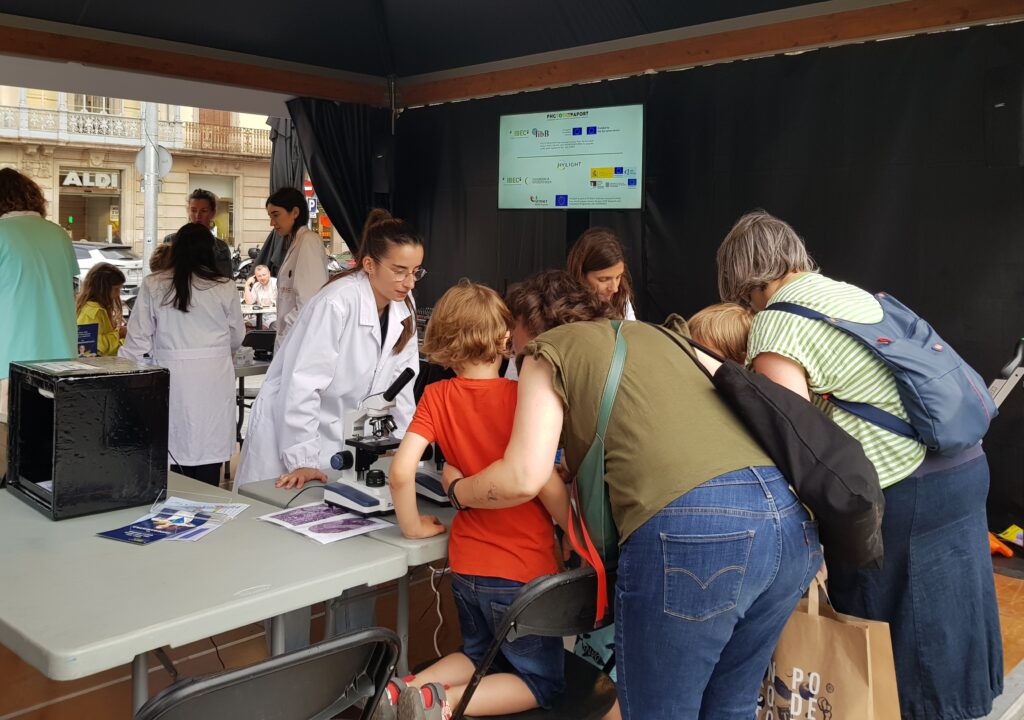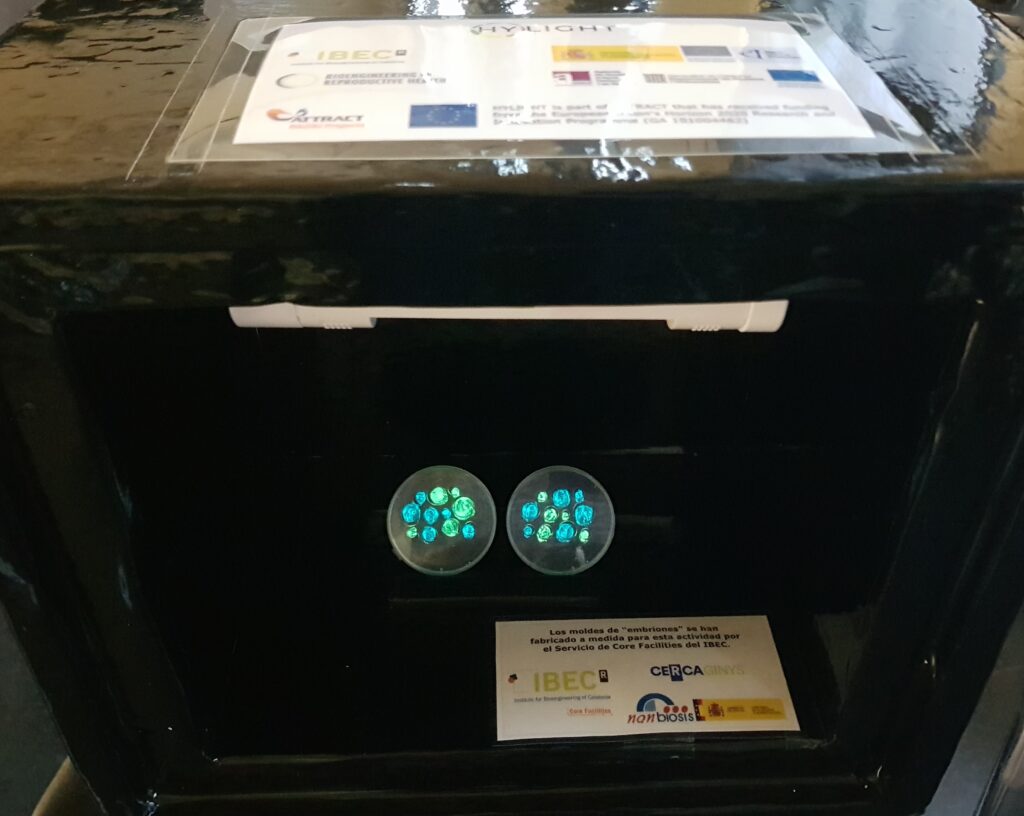The 17th Science Party (“Festa de la Ciència” in Catalan) was held from June 7th to 9th in Barcelona. Researchers from the Institute for Bioengineering of Catalonia (IBEC) organized a series of hands-on activities to explain the HYLIGHT project to a non-specialized audience and to make the topic of in vitro fertilization more accessible to the society.

The 17th edition of the Science Party in Barcelona brought together Nearly 20,000 people, that had the chance to explore a wide range of scientific fields, including biology, mathematics, physics, and astronomy. The event featured 160 activities—ranging from shows, workshops, and experiments to guided tours, microtalks, games, and debates— that were conducted by 400 participants from 140 institutions.
In this context, Julia Fabà and Irene Oliver, HYLIGHT researchers at IBEC, performed a hands-on activity entitled “Light as a mechanism to help solving health problems: bioengineering applied to assisted reproduction”.
The activity began with a brief presentation where researchers explained how human fertilization occurs, the process of implantation in the mother’s uterus, and how an assisted reproduction laboratory works. They introduced HYLIGHT technology and the rationale behind the project that aims to determine the most suitable embryos for implantation, combining hyperspectral analysis with artificial intelligence, allowing the classification of embryos based on their metabolic profiles.

After this introduction, visitors could see different mouse embryos samples under the microscope to observe their morphology and development. They could also simulate the work done by an embryologist at the IVF clinics by pipetting and transferring from one Petri dish to another, small glass beats with the size of real human embryos under a stereo microscope. There was also a video showing the first five days of a human embryo development and another one displaying an Intracytoplasmic Sperm Injection (ICSI).
In addition, researchers constructed “fake embryos” using two identical PMDS moulds painted with different colours of a UV responsive paint to explain the rationale behind HYLIGHT project. Only when the UV lamp was on the assistants could see the colours and conclude that, in fact, the embryos were not identical as they seemed to be under white light. The idea here was to show that light can be very useful to reveal differences that we cannot appreciate under white light.

These outreach activities effectively bridge the gap between science and the general public, while also highlighting the significance of research in our daily lives and society at large.
